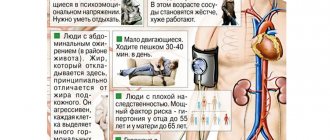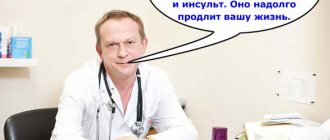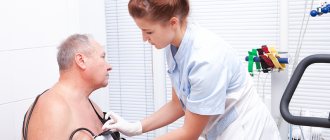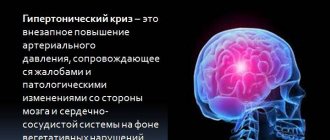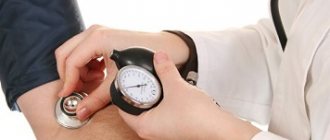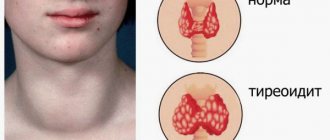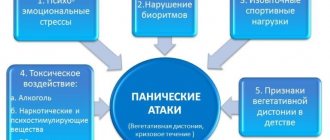Intercostal neuralgia of the thoracic region is a special painful condition of the body, accompanied by pain due to pinched nerves located in the intercostal space. The occurrence of this pathology is secondary in nature, that is, the symptoms that arise are a consequence of other, more serious diseases of the body. Neuralgia in this area is sometimes difficult to identify, because its symptoms largely coincide with the signs of dysfunction of organs located in the chest area.
Symptoms of intercostal neuralgia of the thoracic region
Symptoms of intercostal neuralgia of the thoracic region are most often noted in people of the older age category, less often in middle-aged patients. As for children of younger and older ages, the incidence rate is isolated cases. This painful condition of the body does not pose a serious danger to it, but neuralgia must be treated without fail.
Neuralgia of the intercostal space
Intercostal neuralgia is closely associated with the manifestation of pain in the chest. This can happen due to a deterioration in the full functioning of the intercostal nerve fibers against the background of pinching, infections, or hypothermia. This problem can arise at any age, but still the largest percentage of patients is recorded among older people.
Intercostal neuralgia
Such a pathology can also occur due to the presence of pathologies in the patient such as osteochondrosis, hernia of the thoracic ridge or herpes zoster. Often neuralgia is a symptom of more serious diseases - for example, pleurisy or various types of oncology. In addition, neuralgia on the left side of the chest can cause symptoms associated with heart disease. The presence of symptoms that are closely related to the manifestations of other various diseases often requires additional examination by specialists in related fields of medicine, such as cardiology, oncology or pulmonology.
Forecast and prevention of intercostal neuralgia
In most patients, intercostal neuralgia can be completely cured. If thoracalgia occurs against the background of a herpetic infection, relapses are possible.
If adequate treatment of neuralgia does not bring the desired result, a more “deep” diagnosis is carried out to search for the possible cause of this condition. First of all, spinal hernias, benign and malignant tumors are excluded.
To prevent neuralgia of the intercostal branches from recurring, and its symptoms in adults to manifest themselves less painfully, doctors recommend the following preventive measures:
- follow the canons of a healthy lifestyle: give the body adequate physical activity, eat right, actively relax in the fresh air, give up bad habits, etc.;
- maintain normal functioning of the immune system;
- monitor posture and spinal health;
- promptly treat chronic diseases and infectious processes;
- if possible, visit the pool and harden yourself;
- undergo preventive examinations on time;
- undergo regular scheduled examinations by an osteopath approximately once every six months.
If a person has previously had thoracic neuralgia, he should not be overcooled, be in a draft, expose the body to excessive physical stress, perform sudden movements or remain in an uncomfortable position for a long time. In addition, it is necessary to eliminate or minimize as much as possible stress and any unfavorable factors that can cause symptoms of intercostal neuralgia on the left, right or both sides.
Did you like the article? Add the site to your browser bookmarks
Structure of nerves
Intercostal nerves consist of several types of fibers: motor, sympathetic and those responsible for sensitivity. Each of these nerve endings is located in the intercostal space and runs along the lower edge of each rib. The closing pair of nerve roots is called “subcostal” and is located under the 12th rib.
Each pair of nerve fibers is covered by a special pleura, starting from the spinal canal to the corners of the ribs. The intercostal nerves are responsible for the sensitivity of the muscle tissue of the chest, abdomen and mammary glands, and also innervate the skin in these areas of the body.
Causes
There are a huge number of prerequisites for the diagnosis of “intercostal neuralgia of the thoracic region”. But all the reasons ultimately come down to two main conditions: irritation of nerve fibers in the intercostal space or pinched nerve in the thoracic region.
Pinched nerves can occur due to osteochondrosis, kyphosis, hernia
Pinched nerves in the chest often occur against the background of osteochondrosis in this area. Also, causes of discomfort can be ankylosing spondylitis, herniated intervertebral discs, spondylitis, and kyphosis.
Irritation of the nerves in the area between the ribs can occur as a result of trauma of various etiologies, overexertion during excessive physical activity, or even as a result of psychological stress.
Intercostal neuralgia in rare cases can result from the following ailments:
Symptoms of neuralgia on the right and left
Any neuralgia, including intercostal neuralgia, is primarily pain. Painful sensations can be of a different nature (aching, dull, sharp, piercing, burning) and have different intensity. Sometimes the pain is so severe that it forces a person to take a forced position and sharply limit physical activity. Intercostal neuralgia, which has pronounced symptoms, is described by patients as a lumbago or electric current discharge running from the spine to the sternum.
Thoracalgia often begins gradually, with a tingling sensation in the intercostal spaces, then acquires pronounced intensity. Less often it occurs suddenly. The pain can radiate to the scapula, epigastric area, heart, arm and lower back. Sometimes it takes on an encircling character. It intensifies with changes in body position, movements, coughing and deep breathing.
As a rule, painful attacks are constantly repeated, lasting from a few seconds to 2-3 minutes. Therefore, treatment of acute intercostal neuralgia on the right and left, first of all, always begins with the elimination of pain.
In addition to thoracalgia, a person may be bothered by characteristic local signs caused by the influence of sympathetic, sensory and motor nerve fibers. Intercostal neuralgia, depending on the damage to a particular nerve, will have characteristic symptoms on the right, left or both sides of the chest:
- impaired sensitivity, crawling sensation, numbness, tingling;
- muscle twitching;
- increased sweating;
- change in skin color.
If chest neuralgia appears against the background of a herpes infection, it may be accompanied by skin rashes. The latter appear 2-4 days after the onset of thoracalgia. Elements of the rash are located on the skin of the intercostal space in the form of small pink spots, which then turn into vesicles and then into crusts. Subsequently, traces of pigmentation may remain on the skin.
Symptoms of neuralgia
The most common symptom of neuralgia is pain attacks. They can appear in the patient in conditions of complete rest and seemingly excellent health. However, the highest percentage of pain occurs after a sudden change in body position, for example, when turning or bending the body. A person may also experience pain during coughing attacks, and especially after running or other exercise, when breathing becomes more rapid. In this case, sensations of pain also occur during palpation of the intercostal areas of the chest.
The duration of pain attacks varies from several minutes to a couple of days. In this case, there may be a prolonged numbness of the torso area located above the inflamed nerve roots.
An attack of pain caused by thoracic neuralgia can last from several minutes to several days.
Having felt paroxysmal pain, the patient often tries to reduce its intensity by holding his breath or changing his body position to a more relaxed one. Often the patient may think that the nature of the pain is caused by heart problems. However, this can often be misleading.
The table below shows the differences between the symptoms of neuralgia and heart pain.
| Heart attack, angina, other coronary pain | Non-coronary pain | Intercostal euralgia of the thoracic region | |
| The sensations experienced, the nature of the pain | Very strong, accompanied by a feeling of squeezing | Dull, aching | Strong, with “lumbago” |
| Associated symptoms | Feeling of lack of air, pale skin, feeling cold | Sweating, sudden increase or decrease in blood pressure, redness or paleness of the skin. If a person tries to move suddenly, the pain intensifies. | |
| Place of manifestation | On the left side of the chest | On the left side of the chest | Along the intercostal nerve |
| The most common causes of manifestation | Excessive nervous and/or physical stress | Excessive nervous and/or physical stress | Sudden movements |
| What happens when you take medications? | Heart attack - no reaction; Angina pectoris - pain relieved with nitroglycerin | The pain becomes weaker if you take a non-steroidal anti-inflammatory drug - Nurofen, Diclofenac, etc. |
Often the symptoms of thoracic neuralgia are confused with manifestations of heart disease
Herpes zoster often “gives” symptoms of neuralgia of the region, additionally accompanied by the appearance of bubbles with fluid along the path of the nerve fiber. This disease is not contagious, but requires additional treatment.
Complications of the disease
Complications arising from neuralgia can be successfully treated in the early stages of the development of the disease. But in advanced cases, when the patient experiences pain for quite a long time, the “problem” nerve may even die. Then the excruciating pain disappears, but this is the first sign of the disease moving to a new stage, for which the characteristic symptoms are shortness of breath and the appearance of a feeling of heaviness in the chest.
Finding a person in a constant sitting position or other static position can result in dysfunction of the spinal canal and the development of osteochondrosis and other related pathologies. The occurrence of complications can only be prevented by timely treatment and prevention.
Is osteopathy effective for intercostal neuralgia?
The causes of neuralgia in the rib area can be different. However, in many cases, a pinched nerve is caused by the consequences of various injuries a person has received in the past. The capabilities of fine diagnostics using hands make it possible to identify and eliminate these disorders, which leads to the elimination of compression of the nerve and the restoration of its normal blood supply. As a result, inflammation and its integral companion – pain – go away. Osteopathy shows high effectiveness in the treatment of both unilateral and bilateral intercostal neuralgia.
Diagnostics
A neurologist will help the patient identify the presence of thoracic neuralgia. A specialist can make a diagnosis based on examination data and a survey for complaints. During the examination, special attention is paid to the patient's posture. Indeed, with neuralgia, a person, trying to reduce discomfort, involuntarily tries to change the posture of the body in a “painless” direction. When you feel the problem points between the ribs, it is their lower edges that cause pain. And the skin in these irritated areas may partially lose sensitivity.
An important task in diagnosing neuralgia is to determine the nature of pain, which is specific to thoracic neuralgia. In this case, the goal of a neurologist is to exclude heart diseases - for this, an electrocardiogram is prescribed and, if necessary, a consultation with a cardiologist is held.
To rule out heart disease in a patient, doctors perform an electrocardiogram.
In addition to the fact that the symptoms of neuralgia are similar to the manifestations of heart disease, they can often be put on a par with the manifestations of stomach diseases. For example, the symptoms of gastritis or stomach ulcers, as well as manifestations of acute pancreatitis (inflammation of the pancreas) are very similar to the symptoms of thoracic neuralgia. However, there are some nuances in the nature of the manifestation of pain. In gastrointestinal diseases, the painful condition is more prolonged and less severe. It is also often associated with food intake. With pancreatitis, pain has a pronounced bilateral manifestation and also mainly appears after eating. To exclude these diseases, additional studies are carried out, such as gastroscopy, determination of the amount of enzymes in the blood and other specialized examinations.
To exclude radiculitis from the possible causes of neuralgia, an x-ray is prescribed, and if a spinal hernia is suspected, an MRI is prescribed.
MRI and thoracic x-ray results can help determine the diagnosis.
Intercostal neuralgia of the thoracic region may be similar in its manifestations to pathologies of the respiratory system, such as pneumonia, pleurisy or lung cancer. To detect these diseases, radiography or computed tomography is used.
Treatment of thoracic neuralgia
Treatment of intercostal neuralgia is carried out in two parallel ways. The first method of therapy is partial or complete pain relief, and the second is treatment of the disease itself that caused the condition of neuralgia.
In most cases, the patient undergoes therapy at home. Moreover, depending on the severity of the disease, the patient is placed on bed rest from three days to a week. The bed must have a flat and hard surface. It is better if the bed is equipped with an orthopedic mattress, but if this is not possible, then you need to put something flat and hard under a regular mattress that can be adjusted at home. If the patient uses a bed during treatment, for example, with a sagging mesh, then his condition will only worsen.
Treatment with medications
For therapy prescribed:
- nonsteroidal anti-inflammatory drugs, for example, Diclofenac or Meloxicam. These drugs have an analgesic effect coupled with an anti-inflammatory effect. In addition, their zone of action affects the problematic nerve and can relieve syndromes of associated ailments. This type of medication is available in tablets, injections or suppositories;
- muscle relaxants - "Mydocalm" or "Sirdalud" - relieve discomfort in the form of spasms of skeletal muscle tissue;
- sedatives based on natural ingredients. These may be medications such as Sedosen, Persen, Novopassit and many others;
- vitamin B complexes, for example, Neurorubin. Their main effect is to restore damaged nerve roots and increase the interconnection between them.
To get rid of the symptoms of thoracic neuralgia, doctors prescribe medications
Spot treatment of neuralgia
The main method of local therapy is the application of dry heat to the affected area of the body. It should be noted that this method involves the use of an indirect source. Woolen items or down scarves are perfect for dry warmth. It is strictly forbidden to apply hot objects to the area affected by neuralgia - this can only cause harm to the patient. This process is due to the fact that with such heating, the blood flow of the problem area will first increase sharply, but then with cooling the pain may intensify, and the swelling will only increase.
In the local treatment of neuralgia, various ointments or gels based on non-steroidal anti-inflammatory components (“Deep-Relief” or “Fastum Gel”) are widely used.
Pharmacy medications in the form of ointments and gels without NSAIDs include anesthetics. Such drugs include Capsicam or Finalgon.
Remedy for vegetative-vascular dystonia
Rupture of the heart, blood vessels and other things.
Since many of those suffering from VSD believe that they are under constant threat of “rupture” of the heart and blood vessels, we apparently need to clarify this issue. However, the most accurate and short summary in this case sounds very simple: “Bullshit!” If the vessel is not affected by atherosclerosis, if the heart has not yet experienced a single heart attack, if, finally, the blood pressure does not exceed 200, then expecting their rupture is a thankless task. And in people who have been diagnosed with vegetative-vascular dystonia, everything is completely fine with atherosclerosis and hypertension - they simply do not exist.
At the same time, those suffering from VSD often “feel” that a vessel in their head or heart has either “already burst,” or “is about to burst,” or “should burst.” But the whole point is that they “feel” it! Here is the trick: a person simply physically cannot feel how a vessel “burst” in his head. We are only able to perceive the consequences of this misfortune, for example, stroke paralysis, but not the process. There are no receptors in the walls of blood vessels that perceive the state of this vessel! Whether he shrank or didn’t shrink, you can neither know nor feel! In other words, there are no sensors in the vessels that indicate their condition, and therefore all our “sensations” of this kind are fiction. In the same way, our “heartbeat” is to a large extent not a real heartbeat, but a heartbeat intensified by our attention to it.
Mustard without roast beef is not particularly interesting.
Groucho Marx
Most people who complain of palpitations, interruptions in heart function, and fluctuations in blood pressure do not detect corresponding disorders during a special examination (at least to the extent stated). At the same time, a large number of people who actually suffer from tachycardia, arrhythmia and hypertension are sometimes not even aware of this! It's all about increased attention: if you want and try hard, you may well feel the vessel pulsating in your finger. But think about it: if you are able to feel the vessels of your body (there are thousands of them!), and blood pressure, if it rises, then rises throughout the whole body at once, then you must manage to simultaneously feel the pulsation of all the vessels of your body at once! Of course, this is impossible. In other words, you feel one vessel only because you really wanted to feel it, this particular vessel. And this feeling is always distorted, “not true.”
Regarding heart break. Of course, if you imagine a heart break, the picture turns out to be dramatic. And it seems that this is so natural: the man “did not survive the grief that fell on him and his heart was torn to pieces.” For some Turgenev or Tolstoy this may be a good metaphor, but for a doctor it’s rubbish! Heart ruptures do occur, but, firstly, rarely, and secondly, as a consequence of a long and serious illness, and VSD is not one of the latter. Indeed, if a person has experienced several heart attacks (as any electrocardiogram will show), then a so-called scar forms in his heart.
In general, the heart is a muscle sac, and a strong, powerful, dense muscle sac. During a heart attack, blood access to some part of this sac is stopped, the condition of the muscle here worsens, figuratively speaking, we can say that it has become leaky in this part. Afterwards, the body itself “patches” this “worn” with special connective tissue, and you can move on with your life. Of course, the elasticity and strength of our muscle bag in this damaged part decreases. And the more such “patched” parts on the heart, the higher the risk of it rupturing under the pressure of blood pressure. But if you are afraid that your heart will “break” (or “break”, or whatever else will happen to it), then you should have at least some such scars in your supply, i.e. Real heart attacks. And out of the blue, from vegetative attacks. Don't even fool yourself!
And finally, the most paradoxical thing! Scientists conducted a special study, the essence of which was as follows. They found people who were diagnosed with VSD twenty years ago, and they selected precisely those who suffered from their “disease” in the most serious way, those who had painful attacks and had a distinct fear of death. Then they were subjected to a comprehensive medical examination: with the help of the most modern equipment, they were examined for the condition of their heart and blood vessels, brain and respiratory function, as well as everything else that could be looked at. The result was impressive! But what do you think?
In all the subjects who had all the manifestations of VSD in their past and the corresponding diagnosis, the state of the body and its functions was (on average) significantly better than that of their peers.
This seems strange. But, in reality, there is nothing strange about this. In fact, all those suffering from VSD constantly train their body with their endless “attacks”. Tachycardia, increased blood pressure and other body reactions characteristic of VSD are not much different from the loads to which people who regularly engage in their own health improvement through jogging and gymnastics expose themselves. It turns out that VSD is a kind of daily “charging without charging”!
Charging is nonsense. Healthy people don’t need to do it, but sick people shouldn’t.
Henry Ford
Of course, VSD is not the most optimal way to improve health and prevent cardiovascular diseases, but, damn it, it’s also an option! The only problem is that the mental state of people suffering from VSD is no good. Fear is not the best companion in life, much less the fear of death. And if we decide to treat VSD, which is so beneficial for health, then only in order to improve our mental and psychological state. But there is no risk to the life of a person suffering from VSD!
Heart, you don't want peace.
Whatever one may say, the human heart is the most sensitive organ, and it positively does not want peace. Any stress, any shock in life - good or bad - communicates itself to us through the increased work of the heart, i.e. heartbeat. And that's okay! Stress activates the body's functions to provide it with the high tone necessary for fight or flight. This is why a person’s heart begins to beat faster when under stress, or even lose its rhythm altogether.
Fortunately or unfortunately, in our human life there are almost no dangers from which one could escape in such a simple way - physical fight or flight. But the body reacts in an old, ancient, or more precisely, animal way. As a result, this function is overstrained: the heart is activated, but since this activity in fact turns out to be unnecessary and unproductive, malfunctions occur.
This is the fate of people who are fixated on their heart and it is precisely because of this, and not because of the weakness of this heart, who received a diagnosis of vegetative-vascular dystonia. VSD is not a heart disease, but a concern about the condition of this heart. That is why the “old” doctors did not call it by this outlandish term, but very simply - “neurosis of the heart.” Often, however, these palpitations actually look like real heart attacks.
What patients with vegetative-vascular dystonia call a “heart attack” has been called a “panic attack” all over the world for more than twenty years.
Soon, I am sure, our doctors will give us such a diagnosis. But what is a “panic attack”? This is also a heart attack, but not pathological, but caused by psychological stress. The only problem is that we are not always aware of our stress. Often we experience chronic stress, and therefore at the level of consciousness we manage to get used to it, but the body cannot boast of such conformity; its autonomic system continues to react in its usual way - by activating the cardiovascular system.
So it turns out that such a heart attack overtakes us in a situation that does not seem stressful to us, although in fact there is this stress, we just didn’t notice it.
But since we overlooked it, but not the cardiac activity, fear arises: “What’s wrong with me. Do I have a serious illness? Am I going to die from this heart attack?!” We get scared, an even greater nervous load falls on the heart, and it begins to go crazy.
Then the situation develops, like in a bad detective story. First we rush to the doctors, wanting to save ourselves from heart attacks. However, doctors, as a rule, turn a deaf ear to us and report that, I quote: “Everything is fine!” Good order: the heart jumps out of the chest (sometimes even at night), and the doctor “washes his hands of it”! Shine! The Russian doctor diagnoses us with VSD and sends us to all four directions.
The desire to be treated is perhaps the main feature that distinguishes humans from animals.
William Osler
Now, without receiving any proper treatment, we begin to fear the repetition of these extremely painful heart attacks. However, it is precisely this fear that is, in fact, our main problem, since it is precisely this that creates excess stress on the heart. The result is not long in coming - heart attacks begin to appear with enviable regularity. The vicious circle closes, and the person finds himself alone with his problem: there was one - psychological, now there are two - both psychological and cardiac.
On a note
A panic attack is what a person experiences, simply put, it is an attack of panic, acute anxiety or fear; and “panic attack” is a medical diagnosis. What, you ask, is the difference? I answer: if you just got scared once, that’s one thing, but if such attacks become more or less commonplace for you, then it’s already a “panic attack.” And, of course, such a “disease” can and should be treated not with heart medications, but with drugs that affect the emotional state. That is why throughout the civilized world, people suffering from “panic attacks” (read: VSD) are prescribed antidepressants with an anti-anxiety effect. And in Mother Russia, unfortunately, people are left alone with their problem.
Here is such a sad story, and not exclusive, but disseminated in the most indecent way, because at least every fifth person who comes to see a local doctor suffers from such heart attacks caused by psychological stress! However, the therapist’s refusal to provide assistance to such patients or the ineffectiveness of his assistance is a natural phenomenon. Since the cause of these heart attacks is not associated with organic damage to the heart (which a therapist can and should treat), but with the initial psychological stress and the person’s subsequent experiences with the attacks that occur.
A “panic attack” is an unpleasant thing, but not dangerous.
And the panic that arises in a person who does not know what is happening to him is natural. However, we are reasonable beings to understand: people do have cardiovascular diseases, but VSD is not one of them. Whereas the panic that overcomes a person who does not know that he has become a victim of the “vegetative component” of his own stress is a mental state and, to put it mildly, not the most successful. It is with him, and not with his heart, that a person diagnosed with VSD must fight. And if we blame our hearts in this case, this is truly pure injustice! Not only is it not guilty of anything, but it is also in good physical shape!
A case from psychotherapeutic practice: a psychotherapist with St. Petersburg registration will remove. "I WILL SPOIL"
Fear of the unknown is the most powerful feeling. We inherited it from our animal ancestors and now we are almost unaware of it, but deep in the subconscious, the fear of the unknown continues to reign. Children are afraid of the dark, adults put off solving difficult issues for years and, under any pretext, continue to use previous tactics that do not bring them success - all these are manifestations of the fear of the unknown.
We are afraid of death, which is a sealed secret for us, but it is still the same fear of the unknown. Legends are made about death, religions promise salvation and eternal life - but this is only the work of the mind. The powerless mind seeks salvation from the powerful fear of the unknown, it comes up with explanations for the unknown, calms down, and this fear gradually deals a crushing blow to the human psyche.
When a person turns to a psychotherapist for help, the doctor can always find this fear of the unknown hiding behind the patient's problem. In the endless struggle between consciousness and subconscious, the fear of the unknown takes on the most bizarre forms.
Lida went through a difficult period in her life. One year, her mother died in her arms, her beloved nephew died, and her husband died. Lida's husband has changed a lot, he has become cold and rude. And she went to a psychic - maybe he could tell her what to do? Lida’s expectations were not deceived; the verdict of a specialist in karmic laws sounded like a sentence: her husband had a mistress, and she brought “damage” to Lida. “It will get worse!” - the psychic warned and scheduled his sessions.
The psychic's predictions came true. That same day, upon returning home, Lida felt a terrible attack of suffocation, and her heart was beating as if it was about to burst. The son called an ambulance, and this time the matter turned out okay. Lida completely trusted her psychic and attended his sessions for more than five years. During this time, the husband's relationship with his mistress went wrong, although it did not stop completely. But Lida began to experience attacks of suffocation and palpitations regularly, and the fear of death began to haunt her relentlessly.
It is better to remain silent and appear a fool than to open your mouth and remove all doubt.
Samuel Johnson
Five years later, the psychic admitted his powerlessness - the “damage” imposed on Lida turned out to be too strong. He handed Lida over to his “colleague,” but he refused to help. Of course, this poor woman was now only worried about her illness, and she went to doctors - to one, to another. People in white coats prescribed treatment, but there was almost no effect. The disease progressed, Lida was afraid to leave her home, and someone accidentally said: “You, Lida, should go to a psychotherapist.” Lida felt insulted, but by chance the opportunity came up to go to the Neurosis Clinic. Not trusting anyone, not knowing what to do or where to go, she agreed to be hospitalized.
When I first met Lida, she looked like a squeezed lemon. Almost seven years of severe neurosis, and all of it was just neurosis, were not in vain for her. She told me her story.
When a dark streak came in her life, Lida was looking for an answer to the question: “Why?” Why did my mother die so suddenly, why did my nephew die so absurdly, what happened to my husband? She wanted to hear the answer and received it from an unscrupulous person hiding behind knowledge of some magical laws. For five years he literally “milked” Lida, and when she could not pay the previous tariff, he sent her to another “healer”, who, of course, did not even get down to business.
The death of loved ones is a difficult experience. Lida felt fear when faced with the unknown, and the psychic intensified this fear with his “prediction” (from Lida’s story it was not difficult to guess that her husband was “taking sides”). Hearing that all her misfortunes were just the beginning, Lida’s fear intensified and manifested itself as a vegetative attack of suffocation and palpitations. In fact, this is a completely natural reaction of the body to stress, but Lida did not know about it. She thought it was the effect of “damage,” and so began her long journey down the wrong path.
Lida’s attacks are a common occurrence in the practice of any psychotherapist, although for general practitioners they sometimes seem like a mystery. The treatment for these attacks is well established, so we dealt with this stage quickly. Now she had to help Lida improve her family relationships.
Feeling sick, she “tied” her son to her, and he remained “tied” and cut off the “leash.” Lida openly blamed her husband for her illness, and now that her husband’s “honey period” with his mistress was over, she could no longer restore her previous relationship with him. Fear of death and “illness” made Lida completely lonely. There was a lot to comprehend, a lot to re-evaluate, and most importantly, to master the skills of constructive thinking and the laws of interpersonal relationships.
Now, almost five years have passed since then, Lida is married, but to another person - love, as you know, will unexpectedly appear when you are not expecting it at all. Relations with my son improved, a grandson was born - a joy for the young grandmother. Everything is fine, but you can’t get seven years of your life back, and how would this story have ended if someone hadn’t suggested it and sent it to the Neurosis Clinic? What if she refused? Fear of the unknown forces us to make mistakes, but we are not obligated to make them.
List of complaints
The complaints of a person suffering from vegetative-vascular dystonia are not just a statement of the symptoms of the disease, they are a whole story! For a person suffering from uncertainty, any details are important - what, how, when, where. It seems to him that if he tells the doctor everything in detail, then his disease will be correctly understood by this specialist. And woe to the doctor who turned out to be an “indifferent formalist”!
But here the following must be said: every doctor knows what the autonomic nervous system is and how it behaves in a situation of stress, and therefore, if necessary, he himself will tell all his complaints for his patient, and will provide any details - what, how, when, Where.
But since doctors do not consider vegetative-vascular dystonia a disease, they speak of it exclusively as a “disorder” or “impairment,” then one cannot expect attention from them.
If you want the doctor to be really concerned about your condition, then the disease with which you are contacting him must involve a risk to life (not his, of course, but yours). Patients with vegetative-vascular dystonia themselves see this risk in their “sore”, but in fact they only imagine this risk, it is a kind of illusion, a deception of perception.
But doctors are well aware that vegetative-vascular dystonia is a functional disorder (hereinafter I quote according to the official definition), “characterized by a benign course, a good prognosis and not leading to
cardiomegaly or heart failure.”
In other words, no matter how much you want to die from it, you cannot die from it, and therefore there is no way to interest the doctor in these complaints. Moreover, as I already said, they are known to any doctor without a doubt. We will announce the entire list.
When you are thirsty, it seems that you will drink the whole sea - this is faith; and when you start drinking, you’ll only manage two glasses at most—that’s science.
A.P. Chekhov
As you and I already know, autonomic dysfunction can unfold either in a sympathetic or parasympathetic manner. In the first case, palpitations, high blood pressure, sweating, constipation, low-grade fever, dry mouth, etc. will most likely be noted. In the second case, autonomic dysfunction is usually manifested by nausea, vomiting, loose and frequent stools, frequent urination, decreased blood pressure, bradycardia (relative decrease in heart rate), feeling of suffocation, decreased body temperature, etc. But more often than not, the failure of the autonomic system is of a mixed nature, and in this case, both of its departments “split off their numbers” - in turn and jointly.
However, the undisputed “leaders” in the list of complaints of patients with vegetative-vascular dystonia are: palpitations, interruptions in the functioning of the heart, pain in the heart area, fluctuations in blood pressure, difficulty breathing, dizziness, headaches and fainting, as well as sweating and (sometimes) feeling "paralysis". All these are reactions of the autonomic nervous system, and they are not dangerous for our health, although those suffering from VSD think so. Well, I'll try to explain what's what here.
Heartbeat
What appears to be a “palpitation” to a person may be normal, and not at all pathological, heart function. Our heart rate increases under any load, and this is natural, and psychological stress is exactly the same load as any other. [It’s not without reason that the central television channels show game programs where participants are eliminated from the game if their heartbeat numbers exceed a certain indicator - 120 or, for example, 130 beats per minute. Of course, they are excluded from the game not because there is a risk to their life, but because they were unable to cope with the stress they experienced.] A person may feel that his heart is “pounding”, “knocking”, “jumping out”, etc. P. But, really, rarely do these numbers exceed 100-120 beats per minute, and this is not scary or dangerous at all. After jogging (for the purpose of recovery, as you understand), this figure can exceed 160 and 180 beats per minute!
I always tell my patients that it would be worse if they didn't have heart palpitations when they're stressed, because that would mean their autonomic nervous system isn't working. And so it works, very well! Sometimes a patient with VSD tells me: “Well, how healthy I am. I have a heartbeat!” What should I answer? If you don't have a heartbeat, consider yourself dead. The heart, you know, must beat. And with what frequency it beats, this really doesn’t matter significantly: well, 60, well, 120. It works! Eureka.
Interruptions in heart function
There is an extraordinary amount of confusion going on with this symptom! Many patients with VSD feel as if their heart from time to time “freezes,” “stops,” and “then starts again.” But, as a rule, all this only seems to them. For example, some of them told me that their heart “stopped” for periods of 10-20, or even 30 minutes. What simply cannot happen! Otherwise, it would be impossible to tell the doctor about this.
Unfortunately, the results of “self-measurements” of pulse are, as a rule, deeply erroneous. A person can be sure that his pulse exceeds 130, or even 200 beats per minute, but the “control measurement” I made shows that this, so to speak, “tachycardia” fluctuates between 70-80 beats per minute! With the same “success”, patients determine their extrasystole, which is actually absent. And this is a scientific fact! A special study showed that at least 44% of patients who indicated that they had interruptions in their heart function were sadly mistaken in this, fortunately.
However, a patient with VSD can indeed have interruptions in the functioning of the heart, just like any other normal person. Functional disruptions in the functioning of the heart are natural and normal; after all, it is alive. Now I remember one study conducted on military pilots - these standards of physical, and even more so, cardiac health. So, at first an ECG was taken from one thousand pilots, and extrasystoles were found in 2.5% of them, i.e. They had few extrasystoles.
Then they all underwent 24-hour monitoring (this is when an ECG is taken throughout the day), and then the situation changed dramatically! A wide variety of heart rhythm disturbances were detected in 29% of pilots. Finally, they underwent ECG measurements at maximum physical exertion, and here all kinds of arrhythmias were found in 35% of healthy “palate specialists.” Moreover, all these pilots did not present any cardiac complaints, did not note any painful symptoms and did not have any cardiac diagnoses! So occasional heart rhythm disturbances are normal!
Pain in the heart (
cardialgia )
Pain in the heart in patients with vegetative-vascular dystonia is a common occurrence, but they differ significantly from pain in angina pectoris (a truly serious heart disease). In a patient with angina pectoris, chest pain occurs in a clear connection with physical activity (depending on the severity of the disease, it begins when climbing stairs or from the sixth, or from the fourth, or from the second flight of stairs). In patients with VSD, such a strict dependence, let us assume obligatory and constant, is never observed, but it should have been if they actually had heart disease.
In a patient with angina pectoris, as a rule, there is a specific irradiation of heart pain - it radiates to the left arm or left shoulder blade, and the pain itself is most often localized behind the sternum, and over a wide area. This kind of irradiation does not occur in patients with VSD, and the “heart pain” itself occurs point-wise, in a specific place. Why? Yes, simply because this is not heart pain at all, but classic intercostal neuralgia, in which it is not the heart muscle that suffers, but a nerve, and not in the chest, but in the back, where it is pinched due to osteochondrosis. [We will continue the most detailed story about osteochondrosis and intercostal neuralgia in the book “A Remedy for Headaches and Osteochondrosis,” which is published in the “Express Consultation” series.]
And this nerve has absolutely nothing to do with the heart; it innervates the muscle that connects two adjacent (above each other) ribs. That is why the strength of these pains often depends on the movements of the chest, on the activity of breathing, and not at all on the actual physical activity, as it should have been if we were talking about a real heart disease that could lead to myocardial infarction.
And if our heart “pricks,” “pierces,” “pulsates,” “goes numb, like in a refrigerator,” “gives into the shoulder blades and arms, lower back and neck,” “heart spasms,” “a lump behind the sternum,” and in this case, “tingling”, “squeezing”, “sharp compression”, “squeezing”, “tension”, “stuffiness”, “burning” in the heart area, as well as the left hypochondrium, upper abdomen, “bloating” or, conversely, is felt , “emptiness” in the chest, then you can relax - these are by no means the pains that lead us straight to the next world, this is an unpleasant, but not dangerous, vegetative-vascular dystonia.
Fluctuations in blood pressure
When a patient tells me they have blood pressure, I always ask about what they call “blood pressure fluctuations.” I have seen patients whose upper blood pressure numbers went well beyond 200, or even 250. Cases when the lower numbers in patients rose to 120-130 had no less psychological effect on me. But, really, in the first case, as a rule, it was always about the so-called “malignant type of hypertension,” and in the second, about serious kidney disease. And such numbers have never, never been, and never can be, seen in patients with VSD.
Those suffering from VSD may feel that a pressure of, for example, 135/95 mmHg is “high pressure.” But this is not only not high, it is generally normal pressure! The mildest - the first - stage of hypertension will not be diagnosed with such figures, and even if such figures are constantly maintained! And if the vessels do not rupture under a pressure of 250 mmHg, then at 160 there is no need to rupture at all, unless due to some capriciousness, but even then it is unlikely.
And one more thing, the rise in blood pressure in itself is not a problem, the problem is damage to the vessels themselves, atherosclerotic damage, which we will discuss below. It is the famous atherosclerotic plaques that are dangerous to human life, since they can break away from the place of attachment - either causing a rupture of the vessel in this very place, or moving further along the vascular bed and clogging the vessel at the site of its narrowing.
But, have mercy, for this you need to have atherosclerotic plaques! And for such a thing, you need an appropriate age, certain metabolic disorders in the body and, finally, a doctor’s verdict, with which, you can believe me, if these plaques really exist, there will be no problems. All this will be determined during the first examination; doctors will not miss atherosclerosis. And to be afraid of the very fact of increasing blood pressure despite the fact that there is no trace of atherosclerosis is, to say the least, strange!
Let's sum it up
With proper and timely treatment, thoracic intercostal neuralgia is completely curable. Prevention of this disease is to prevent the development of “root cause” diseases, as a result of which neuralgia subsequently occurs. It is also necessary to constantly lead a healthy lifestyle in order to strengthen the immune system and maintain a healthy state of the body.
It is possible to get rid of such a disease, but it is worth starting treatment on time - this will help you forget about the discomfort as early as possible. You should not prescribe treatment methods on your own, so as not to worsen your health condition even more.
